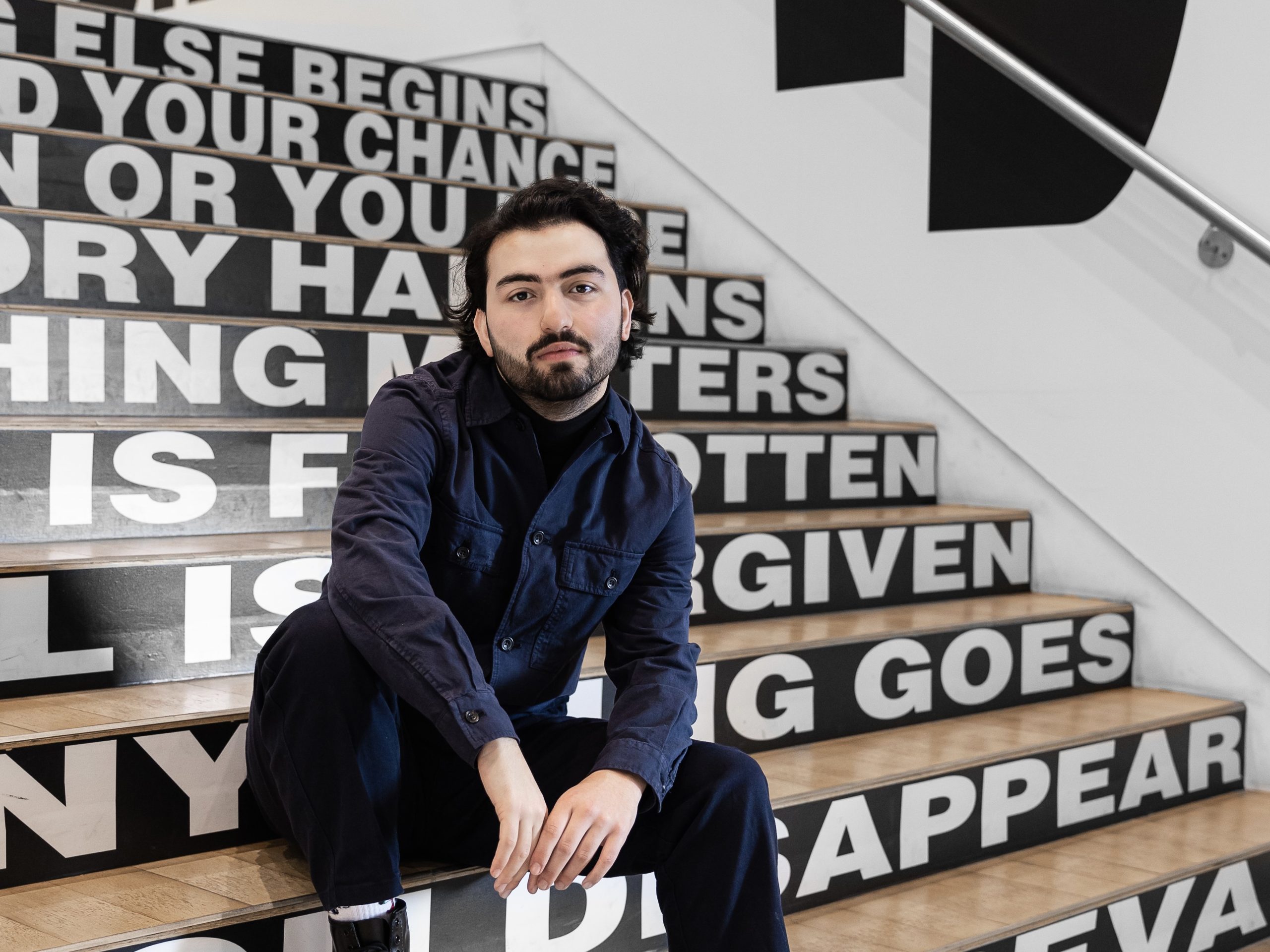Who are the people who study or work at TU Delft? We meet them in this series. This time Ahmed Emin Batman, who is making a documentary about earthquake survivors in Turkey.
Ahmed Emin Batman: “The earthquake was a very hot topic during the first weeks, but help is still needed.” (Photo: Heather Montague)
English only
“When I heard about the earthquake in Turkey on 6 February, it was the deadline week at the end of the first semester and I was about to finish my last paper. All of a sudden, it happened and I didn’t know what to do. I thought what can I do to help? One way was to collect money and clothing, which many people did. It was very nice to see those things happening, but at the same time, I felt like I had to do more.
I know Turkish, I know English and I speak Dutch, so I thought there must be some way to use that. I have a following on Instagram, so I posted a story on that to see if it might mean something to someone. Then I got a call from an international humanitarian organisation in Turkey and they asked me to be an interpreter for the international rescue teams from Indonesia and Spain. I felt good but scared at the same time. I had seen all these stories about dead bodies on the ground, infection, and hygiene; it was a lot. I booked my flight a couple of days after the earthquake but I cancelled it the same day. I just felt like it was too much for me. The next day I woke up and felt called and knew I had to go.
The NGO said to try and get there however I could, that things were so chaotic that they couldn’t promise anything. After my flight, somehow, I got on a bus going to Hatay with victims of the region that got affected the most. These people came to Adana just to make sure their families were safe and to collect stuff from their homes. I felt so much history being with those people and I felt like it should be documented. I wanted to be a voice for those people. I had my camera with me and I asked people on the bus for permission to film. I told them it was to raise awareness, that I wanted people to know about them and their circumstances, and I wanted people to see and maybe help more. It started on the bus and then I got to the earthquake area and it was crazy. People were still under the rubble, so we were trying to rescue people. I had seen the buildings on the news, but I was missing something about the human stories, what people were going through.
‘I am planning on having a screening at the Faculty’
I’m making a documentary called Do you hear our voices? (trailer). The idea behind it is to show in a very raw way what my week as a volunteer interpreter for the international rescue teams in Hatay looked like. You can see the efforts trying to rescue people, but you also see the hospitality of people. Even though they had nothing they were inviting me to come over for coffee. It’s also an observation of me as an architect to be there and to witness what happened. I was there to interpret between the families and the rescue teams and it was so surreal. In front of every apartment building they had a fire with families gathered around to stay warm. I imagined my own family being in one of those places and maybe trying to rescue their son. There were so many people affected, young, old, babies, all under the rubble. That is what stuck with me the most.
The goal of the documentary is to raise awareness and to get it back on the agenda. The earthquake was a very hot topic during the first weeks, but help is still needed. Together with a creative agency we had a first screening and organised an auction where we raised EUR 13,000. The documentary is still a work in progress but I am planning on having a screening at the Faculty of Architecture and the Built Environment during the first weeks of the next academic year.
I also work for the Van Gogh Museum and while I was in Turkey, I had some things in my bag for people to draw with. It was interesting to see kids and families enjoying art and not having to think about their traumas and what they had been going through. It made me want to do something like that in a sustainable way. Right now I’m working on a project called Ker Van (follow updates) to build an ‘artist in residence on wheels’. It is being built right now to go by road from Amsterdam to Turkey, to the earthquake area. There will be different workshops like art, photography, and painting, as well as documentary film screenings on the façade at different locations. It’s a way to build resilience, using art as a medium for people to heal their traumas. That is the goal.”
Want to be featured in Humans of TU Delft? Or do you know someone with a good story to tell? Send us an e-mail at humansoftudelft@gmail.com
Heather Montague / Freelance writer



Comments are closed.